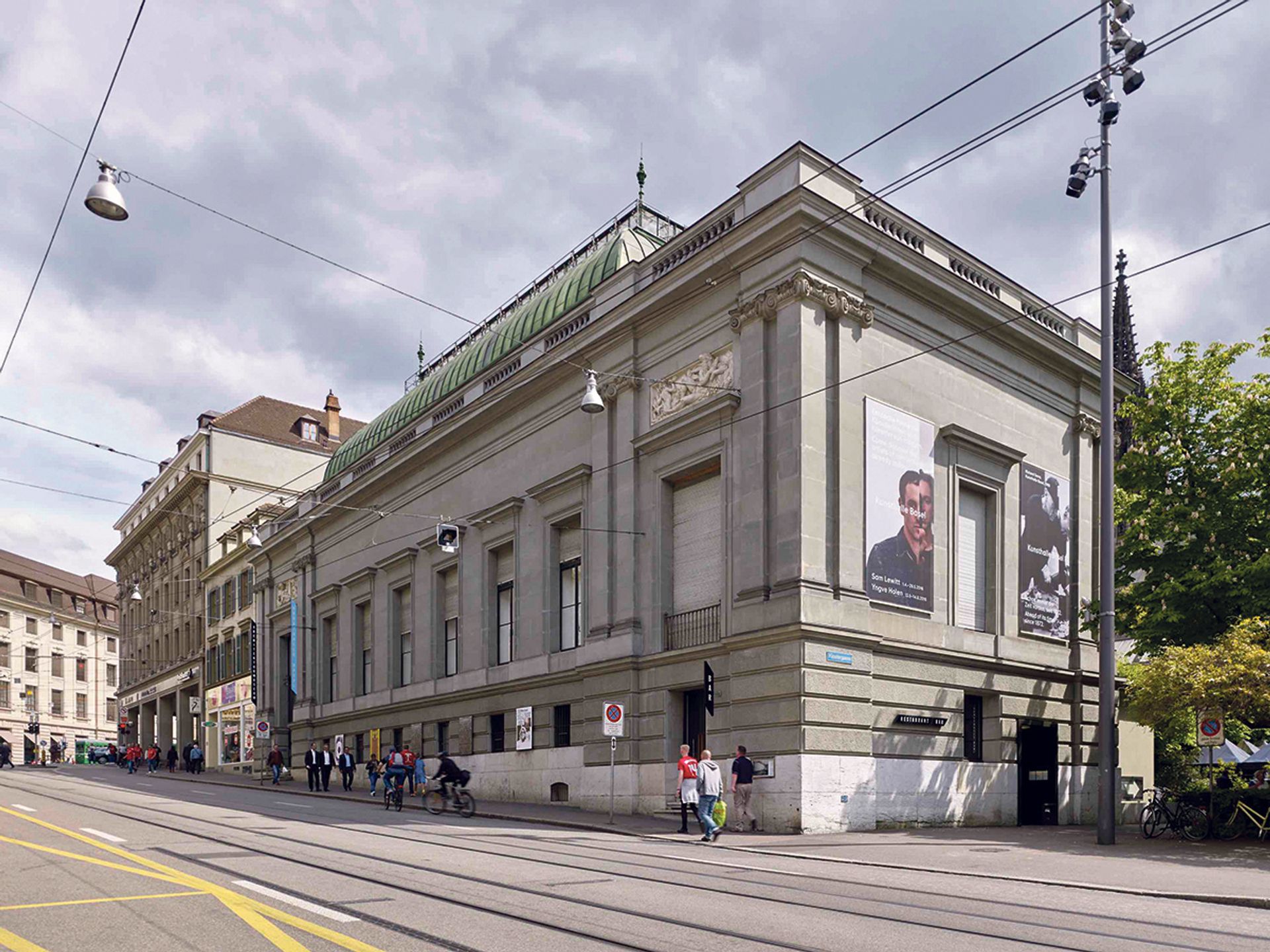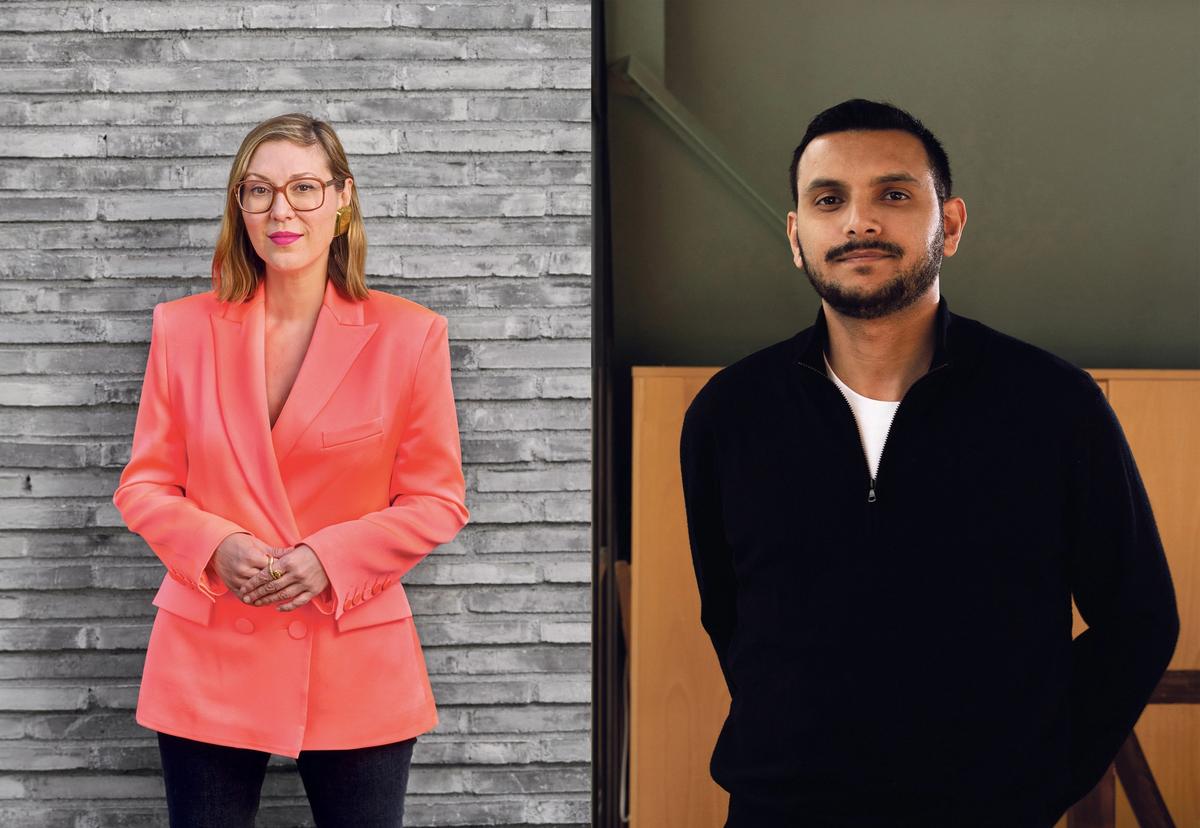In her nine years as the director of Kunsthalle Basel, Elena Filipovic championed the most exciting contemporary artists, including Tiona Nekkia McClodden, P. Staff, Wong Ping and Deana Lawson to name a few. Following the retirement of Josef Helfenstein last year, in April Filipovic took the helm at the world’s oldest public art collection, Kunstmuseum Basel, underscoring her commitment to under-represented artists by hanging Helen Frankenthaler’s newly donated painting Riverhead (1963) in the position long commanded by Sam Francis’s Deep Orange and Black (1953-55).
Mohamed Almusibli, the co-founder and former director of the non-profit art space Cherish in Geneva, succeeds Filipovic as the director and chief curator of Kunsthalle Basel. His strong ties with international and local contemporary artists, and his appetite for fresh perspectives and practices, make him the natural heir to Filipovic, but though they are separated by just a five-minute walk, time for coffee and a catch-up has so far eluded them.
On the eve of Art Basel, we brought them together to discuss their new roles, the challenges for the future, and how they are already putting their unique marks on these two venerable institutions.
The Art Newspaper: Tell us about your ambitions for the Kunstmuseum and the Kunsthalle.
Elena Filipovic: When my appointment to the Kunstmuseum Basel was announced, there may have been some worry among the public that I would turn their beloved museum into a place suddenly focused on contemporary art. The truth is I am interested in thinking about the contemporary in relation to the institution, but not in the way some feared or imagined. I believe a museum like ours should speak to our contemporary moment, which means thinking of it not as a mausoleum but rather as a spaceship of sorts that carries us into the future.
Mohamed Almusibli: What is special about the Kunsthalle Basel is that it puts artists at its centre, a principle I also embraced on a smaller scale at Cherish. In 1872, a group of local artists decided they needed a place to exhibit and built the Kunsthalle—a legacy I am thrilled to uphold.
Elena’s 2024 programme includes so many artists that I admire, and some that I had planned to invite myself, so our programmes echo each other. Marie Matusz, who will present her back wall project at the Kunsthalle in September, had a show at Cherish. While there will be changes, it’s an organic progression.
EF: There has long been a relationship between the two institutions. Actually, the Kunstmuseum’s collection has been marked over its history by purchases of artworks shown at the Kunsthalle. The Kunstmuseum just opened this massive show, When We See Us: A Century of Black Figuration in Painting, which happens to include works by Michael Armitage and Lynette Yiadom-Boakye. I had curated their solo shows at the Kunsthalle years back, and under Josef Helfenstein’s leadership, the Kunstmuseum acquired some of their artworks at the time. Now, I happily get to be the custodian of these works!

The Kunsthalle Basel has been an artist-centred institution since its founding in 1872 © Yohan Zerdoun Photography
How are you negotiating this crucial moment of dismantling and retelling art histories?
MA: It’s important to be observers of trends and to see how discourses evolve, but I view the institution as a host—to the artist, to the exhibition and to the public. Most important to me is ensuring that every visitor, artist and artwork entering the Kunsthalle feels welcomed.
In a museum, people often expect to find what they know, the canon. I’m determined to broaden thatElena Filipovic, director of the Kunstmuseum Basel
EF: This idea of hosting becomes even more layered in an institution like the Kunstmuseum Basel, and added to it is the question of the collection—maybe the collection is the host that stays to the bitter end and cleans up after everyone! In a museum, people often expect to find what they know, the canon. I’m determined to broaden that, and I take seriously my role now as leader of a museum that has the responsibility of working to rewrite that “official” art history and allow the public to be sensitised to the gaps in it. Partly that can happen through the expansion of the collection itself. In addition to major pieces newly entering the collection by Helen Frankenthaler, Julie Mehretu, Cameron Rowland and Cinga Samson, there’s a number of other ways we are trying to recalibrate the museum. And yet, given that we are talking about a vast collection of over 300,000 artworks, it does sometimes feel a bit like adding a few drops of water to the sea. It’s maybe less easy to immediately feel the impact—and yet we need to do it.
Mohamed, there were suggestions that the criticism you received for signing two open letters last year calling for a ceasefire in Gaza may have been motivated by racism. May I ask what you thought about it?
MA: Initially, I was a bit worried about coming to Basel, but from the moment I arrived I found everyone to be welcoming and supportive. It was unfortunate to start with these words, but it has strengthened my relationship with the city of Basel, my colleagues at Kunsthalle Basel, its audience, the members, the supporters and the board.

The Kunstmuseum Basel, which has 17th-century origins, is said to be the world’s oldest public collection Courtesy of the museum
In 2020, 60 Black artists and cultural workers in Switzerland called for art institutions to address structural racism. What progress has been made?
EF: Like any society, Basel has its endemic racisms, sexisms, classisms and prejudices of all kinds. One very important difference is that Switzerland has maybe been late to a discussion about its colonial past, because on the surface (but only on the surface!), it didn’t have colonies that needed to be reckoned with, as other neighbouring countries did, and so it was less apparent that this discussion needed to actively happen—even if there was all the profiting from and perpetuation of colonial trade that Switzerland did take part in. Now discussions about this past and what it means to the society it created are finally happening, and institutions are part of it—both as platforms furthering the discussion and places to be interrogated.
What makes Basel such a special place for art and artists?
MA: It feels like it’s in the Baslers’ DNA to love art. I’ve never experienced anything like it—you go to an opening and see hundreds of people who’ve come because they genuinely love art and they’re engaged in what’s happening in the city.
EF: I guess between the two of us, I’m the established Basler now! I have the advantage of having been here nearly ten years, and yet, being a foreigner [Filipovic was brought up in the US], I still see it with the eyes of someone who didn’t grow up in a society that was committed to culture quite so much. Basel is truly exceptional in that regard.
Often I get asked how Art Basel influenced the Kunstmuseum Basel, and I half-jokingly respond, “Well, you know, the Kunstmuseum’s origins were founded in 1661, so maybe it’s the other way around.” The relationship to art that the citizens of Basel have had historically is what has made each of our institutions possible: Kunstmuseum Basel, Kunsthalle Basel, Art Basel and so many more. I am also convinced that in my years at the Kunsthalle, I could only have done the programme that I did because the local public has such a deep respect for art. You don’t need them to love everything you show—and I don’t expect that, and I don’t even necessarily want that—but you do want a certain level of curiosity and respect; then we can have a conversation.
Do you think the pressure for sustainability will bring systemic changes to art production?
MA: I hope it does. We must constantly question ourselves, find new solutions, explore new ways of working, and stay current with contemporary discourses.
EF: As usual, artists lead the way—in the kinds of questions they’re raising, the way they’re choosing to travel or transport things or choosing not to travel or not to transport things, the demands they are making, etc. They have a role in defining the parameters within which they would like the institution to work. And we’re selecting them because of that, too. Because they’re going to ask the tough questions that the world needs asked.


